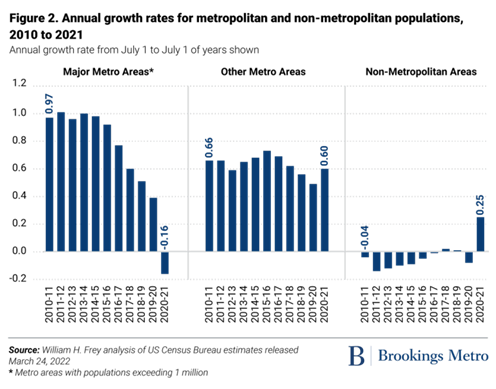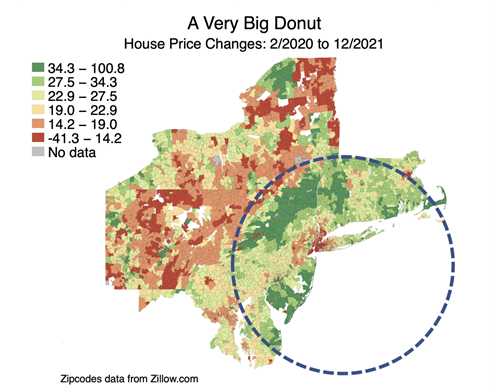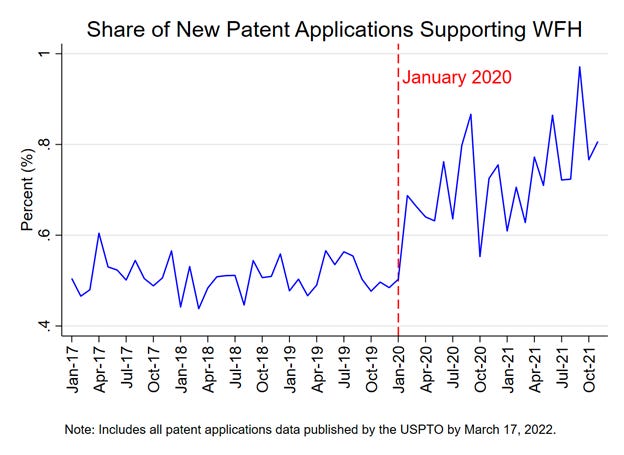Install the app
How to install the app on iOS
Follow along with the video below to see how to install our site as a web app on your home screen.

Note: This feature currently requires accessing the site using the built-in Safari browser.
-
Follow us on Twitter @buckeyeplanet and @bp_recruiting, like us on Facebook! Enjoy a post or article, recommend it to others! BP is only as strong as its community, and we only promote by word of mouth, so share away!
You are using an out of date browser. It may not display this or other websites correctly.
You should upgrade or use an alternative browser.
You should upgrade or use an alternative browser.
To Return to the Office, Or Not Return to the Office, That is the Question (Future of Work Thread)
- Thread starter 5 STAR U-G-A
- Start date
5 STAR U-G-A
Legend
“Free Lunch Every Day”: Recruiter Explains What Companies Need To Offer After Demanding That Workers Come Back To The Office

 Ieva Gailiūtė and Mindaugas Balčiauskas
Ieva Gailiūtė and Mindaugas Balčiauskas
https://www.boredpanda.com/what-companies-should-do-come-back-office-work-from-home/


https://www.boredpanda.com/what-companies-should-do-come-back-office-work-from-home/
After two years of trying to navigate the ups and downs of remote work, many employees felt the obvious benefits of working from the comfort of their own homes. But now, accusatory murmurs are flying around the business world that employers appear on the brink of making their employees go back to the office full-time, whether they are ready or not.
Whether it’s saying that face-to-face interactions are better for teamwork or that the WFH model affects productivity, this only adds more fuel to the fire and creates heated discussions online. And there’s no better place to share hot takes about corporate culture than the notorious professional network LinkedIn.
A few months ago, recruiter Jeremy Bell did just that by creating a post that quickly went viral. He listed several things companies should offer when they leave their employees no choice but to head back to their good old offices. So continue scrolling to read the full post, which amassed nearly 58K likes on the platform, and take a look at how people reacted to it. After you’re done, be sure to share your own opinions about these suggestions in the comments below!
While remote work has become a dealbreaker for many, countless companies are forcing workers to head back to their offices

Image credits: Unsplash (not the actual photo)
So corporate recruiter Jeremy Bell decided to list the things employers should offer if they want to attract and retain talent
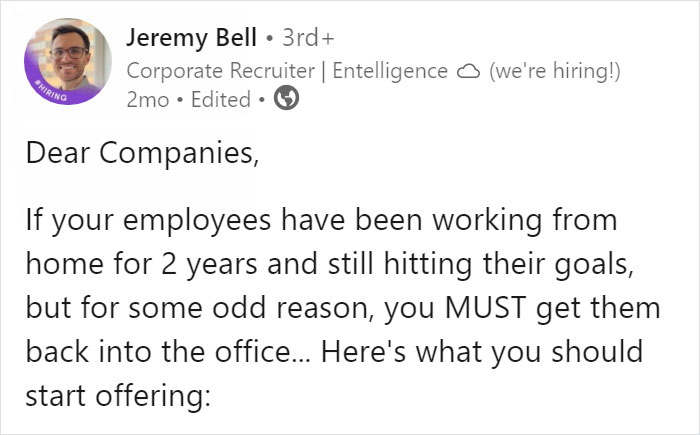







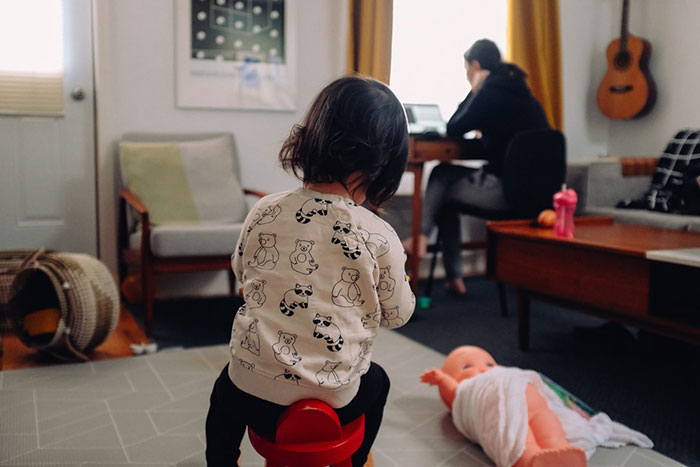
Image credits: Unsplash (not the actual photo)



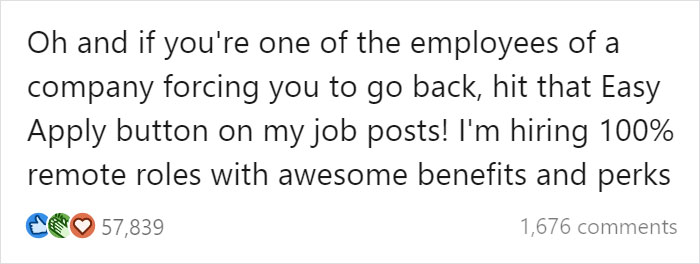
Image credits: Jeremy Bell
According to a recent Microsoft survey of over 31K workers worldwide, a change in the WFH model seems to be on the horizon, no matter the protests of countless irritated workers. The research found that around 50 percent of leaders said their company already requires or is planning to require employees to return to the office full-time in the next year. Yet, workers do not share the same amount of excitement about returning to work in-person as their employers.
“A lot of business leaders have told me that they don’t believe in hybrid work, that it has no place in their culture,” Elise Freedman, a workforce transformation practice leader who is helping companies coordinate their return-to-office plans, told CNBC Make It. “But the companies who push for a full return-to-office could see serious ramifications if they don’t offer employees the kind of flexibility and environment they’re asking for … they’ll just leave.”
Another study by the Future Forum which was developed by the workplace-messaging platform Slack only proves this. After surveying more than 10K workers and managers globally, the researchers found a vast and growing divide in how executives and employees anticipate the future of work, and called it “the great executive-employee disconnect”.
You see, more than half of executives said they are planning the “post-pandemic” workforce policies with little to no direct input from the workers themselves. And while the same number of executives (66 percent) believe they’re being “very transparent” regarding these policies, just 42 percent of workers agree.
Among executives who worked completely remotely at the time of the survey, nearly half reported they want to work from the office every day, compared to 17 percent of employees. Moreover, three-quarters of leaders said they prefer to be at the office three to five days a week but just about one-third of workers said the same.
Moreover, executive overall job satisfaction is now 62 percent higher than non-executives, and it’s driven by higher scores on flexibility (51 percent higher), work-life balance (78 percent higher), and a whopping 114 percent better on “feeling good about stress and anxiety.”
These results do beg the question, what do employees actually want? In these past few years of working from home, employees got a taste of the benefits of remote jobs, and flexible work practices got deeply ingrained and valued in their everyday life. So it’s no surprise that 76 percent of employees want flexibility in where they work, and 93 percent want flexibility in when they work.
When companies and employers fail to put in the effort to understand their staff’s wants and needs, they are bound to watch them leave in droves. Out of employees who reported low satisfaction with flexibility on the job, 71 percent are open to new opportunities. Moreover, 72 percent of workers who reported a low sense of belonging are open to making a job switch. Well, employees are definitely monitoring the new return-to-office policies. And the Great Resignation made sure they would have more options today than ever before.
“Studies show that many executives are holding on to the remnants of the past and failing to see this as an inflection point in the workforce,” Dr. Ella Washington, organizational psychologist and faculty member at Georgetown’s McDonough School of Business, stated in the study. “If employers don’t pay attention and take action to re-create the best of what we’ve learned working virtually in the office and in hybrid-work environments, then opportunities for inequity could skyrocket.”
“Executives have to overcorrect for this possibility now because by the time the return-to-work trends for marginalized groups become clear, it’ll be too late — they’ll be losing talent to companies that were intentional now and did it right.”
Upvote
0
sparcboxbuck
What happened to my ¤cash?
Airbnb CEO says the pandemic was the group’s ‘most productive’ two years ever, so now he’s making remote work permanent
https://fortune.com/2022/04/29/airbnb-ceo-remote-work-policy-most-productive/
I listened to a pod-cast with him talking about his year (I think) of working on the road from AirB&B rentals. I thought it was a pretty cool experiment, albeit sample of one.
https://fortune.com/2022/04/29/airbnb-ceo-remote-work-policy-most-productive/
I listened to a pod-cast with him talking about his year (I think) of working on the road from AirB&B rentals. I thought it was a pretty cool experiment, albeit sample of one.
Upvote
0
Funny thing is the company I work for offers a lot of these perks to folks who were working in the office pre COVID. When they went to complete work from home folks wanted them to give them reimbursement for lunches and other food they were so used to getting.“Free Lunch Every Day”: Recruiter Explains What Companies Need To Offer After Demanding That Workers Come Back To The Office
 Ieva Gailiūtė and Mindaugas Balčiauskas
Ieva Gailiūtė and Mindaugas Balčiauskas
https://www.boredpanda.com/what-companies-should-do-come-back-office-work-from-home/

Upvote
0
5 STAR U-G-A
Legend
WeCrashed, WeWork and the lesson for the future of work
Watching WeCrashed gave me the chills. But what lesson can WeWork teach us as we craft the future of work?
BY CHRISTOPH FAHLE
FRIDAY 6 MAY 2022
https://sifted.eu/articles/wecrashed-wework-future-of-work/
Watching WeCrashed gave me the chills. But what lesson can WeWork teach us as we craft the future of work?
BY CHRISTOPH FAHLE
FRIDAY 6 MAY 2022
https://sifted.eu/articles/wecrashed-wework-future-of-work/
Watching Jared Leto as Adam Neumann in “WeCrashed” walk through an empty warehouse explaining how people would build their futures in a new type of office called a “coworking space” gave me the chills.
It’s exactly the dream I sold people 12 years ago when I started betahaus, one of Europe’s first coworking networks.
My coworking industry friends say they feel the same sense of déjà vu while watching. We were all Adam at some point, relentlessly projecting a bright new future onto old office buildings, winning over landlords, future customers, investors and banks. We exploited partners, friends, family and employees to build our little empires — painfully similar to the series. I may not have gotten a million dollars from my father-in-law like Adam, but I did use the money my grandmother saved for me her whole life to pay for the buildout of our first location.
I even had a brief exchange with Adam back in 2011, when betahaus and WeWork had about the same square footage. But our paths quickly diverged; WeWork raised $15m — and I nearly filed for bankruptcy. Adam stopped answering my emails. A lot has been written about what the tale of WeWork says about startup culture and cult leaders — and it’s not for me to write about that. But I can say what it means for the future of coworking and our fundamental attitudes towards working.
What other coworking founders thought of WeWork
The biggest contribution that WeWork made to the coworking industry — apart from an epic story — was giving us much-needed credibility in the early days. Its success signalled to established companies and future tenants that coworking was legit.
Coworking founders were simultaneously fascinated and disgusted by the WeWork story at the beginning. Fascinated because Wework was executing on a scale and had access to funds that we all could just dream of. Disgusted because the pace of its growth ran counter to the values that had inspired us to create coworking spaces in the first place — community and openness, collaboration and sustainability and, not to forget, accessibility.
It was clear to us that WeWork wasn’t a tech company like Facebook or Uber, and it was odd that bankers, real estate professionals and investors thought otherwise. The business metrics certainly didn’t support the value of a single WeWork floor in New York being worth more than the whole building (which was the case if you broke down WeWork’s valuation into square footage and lay it over the buildings they were occupying).
Still, I caught myself more than once thinking, “Maybe Adam knows something I don’t know? Or maybe he’s some kind of superhero.”
But now that WeWork’s valuation has come back down to earth, it’s clear there was no magic formula. Coworking is a complicated, low-margin, risky business that requires a lot of capital to start.
Rebekah Neumann was right
Adam’s wife, Rebekah Neumann, famously changed WeWork’s mission to “Elevating the world’s consciousness”. As cheesy as it sounds, she was not entirely wrong — but in a different way than you would think.
WeWork — and the coworking movement — helped “elevate the world’s consciousness” about the future of work. That means helping managers and employees see that we’re living in a world where work and life are no longer diametrically opposed. Just look at the rise of digital nomads, “downshifting” (adopting a simpler life), remote working and increased discussion of work-life balance over the last few years. The pandemic only accelerated this trend.
There is no “one-office-fits-all” anymore. Every single one of us works differently, and each individual now finds out how and when best to be productive by themselves. This also applies to the relationship between work and the rest of life like family, kids, friends, hobbies.
Flexible work and coworking companies have a big role to play in helping businesses transition and provide a certain work-lifestyle to their workforce. We are not here to provide space. We are here to provide an experience.
If you are a hybrid or remote company and you want to nail your employee experience, a boring Zoom screen won’t cut it. You will have to make an effort to give each employee their own personal mix of workspaces, software, perks and benefits, offsites… so get ready.
That said, we are still in the beginning of this shift and most players in the flexible workspace industry today are primarily driven by real-estate metrics. They don’t care about community as long as the spaces are booked and the customers are happy. But their attitude can’t hold back the fundamental change in mindset that has already happened at companies around the world.
So let’s cycle back to the beginning: WeWork still exists but it’s certainly not worth $47bn. Did coworking win or lose? It does not seem like WeWork — or any one company — will ever be able to deliver that highly personalised life experience that people want on their own. Instead the future of work relies on collaboration and the existence of many different providers and services creating the ecosystem of work.
So Rebekah was right and Adam was wrong. Elevating the world’s consciousness can be a noble goal — if the mission is empowering people to live and work as they please. But no one company can do it on their own. Let’s build this future together.
Christoph Fahle is founder and CEO of One Coworking.
Upvote
0
BuckBackHome
Wolverine is largest member of weasel family
Three cars spotted at the local CPA firm who has a new building and huge parking lot.
Upvote
0
5 STAR U-G-A
Legend
The Hybrid approach seems to be the most popular. Gives everyone the best of both worlds.Ya boy BigWoof has 60/40 office time vs work from home and the ratio is PERFECT.
I don't feel like I'm stuck at home all week long and still get face time with my managers and favorite co-workers.
Upvote
0
5 STAR U-G-A
Legend
New York Mayor Eric Adams wants Jamie Dimon to ride the subway to work
By Jordan Valinsky, CNN Business
https://www.cnn.com/2022/05/17/business/eric-adams-jamie-dimon-office/index.html
By Jordan Valinsky, CNN Business
https://www.cnn.com/2022/05/17/business/eric-adams-jamie-dimon-office/index.html
New York (CNN Business)New York Mayor Eric Adams is begging the city's business leaders, including JPMorgan CEO Jamie Dimon, to ride the subway to work. Adams is pushing to bring people back to New York offices after years of working from home.
"We're going to get him on a train," Adams told the Financial Times in an interview. "We're going to get everyone on the train. He understands the need of getting his people back and leading from the front."
JPMorgan (JPM) didn't immediately respond to CNN Business' request for comment.
Adams is trying to corral workers back to offices just as the city elevated its Covid-19 status to "High" on Tuesday. That means the city is experiencing "high community spread" resulting in "substantial pressure" on the city's health care system, according to the health department.
"We're telling our corporate leaders: 'Hey, get on the train!'" Adams said in the interview. "We need to advertise that New York is back."
Roughly 40% of workers in New York City are currently in the office on a weekday, according to a recent survey conducted by the Partnership for New York City. The survey also found that remote work is "here to stay," with nearly 80% of employers instituting a hybrid office/remote model.
Another concern from employees about returning to work is crime. About one-third of employers said that reducing homelessness would be "most effective" in encouraging workers to return.
Big banks typically like to stick together on major policy decisions. But as Wall Street grapples with heading back-to-offices, a rare chasm is growing between the finance giants.
Goldman Sachs (GS), Bank of America (BAC) and Morgan Stanley (MSPRE) are taking hardline approaches, requiring employees to come into the office five days a week. However, Citigroup (C) announced that the majority of the company's 210,000 employees will be allowed to go hybrid, with three days in the office.
JPMorgan has reportedly eased its return to office policies too.
Upvote
0
5 STAR U-G-A
Legend
Think Bigger About Remote Work
A guest post by Adam Ozimek
Noah Smith
https://noahpinion.substack.com/p/think-bigger-about-remote-work
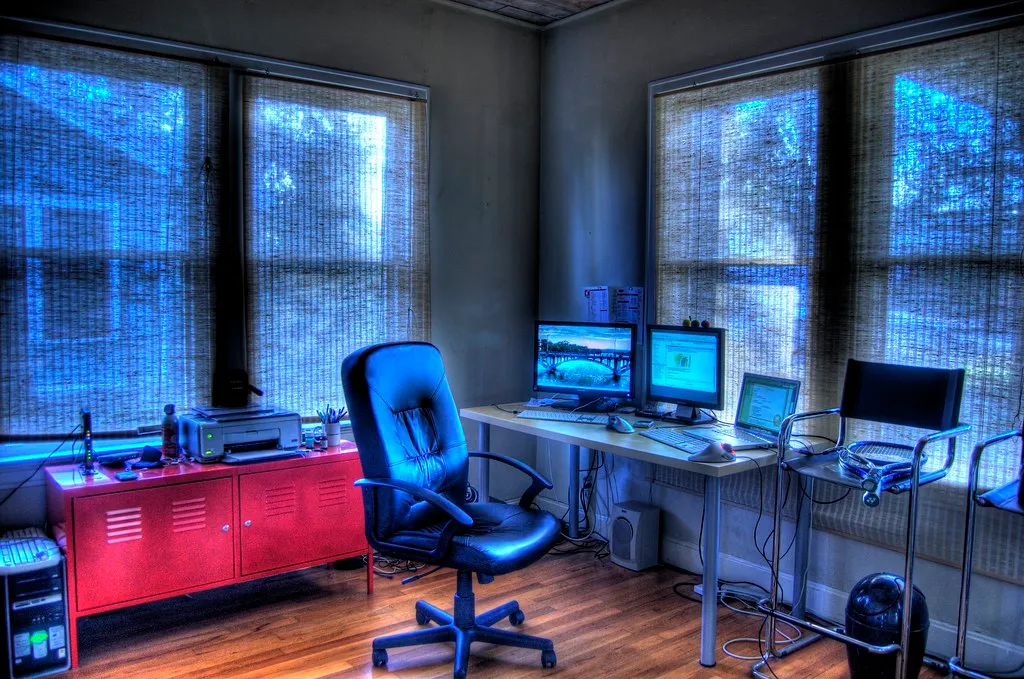
A guest post by Adam Ozimek
Noah Smith
https://noahpinion.substack.com/p/think-bigger-about-remote-work

I’ve written — and I still believe — that the rise of remote work triggered by the Covid pandemic will end up changing the way we produce things in the modern world. It has the potential to do for white-collar industries what electricity did for factory jobs — to distribute production to less costly places and allow more flexibility in job tasks. But for any of this to happen, remote work has to actually live up to the hype in terms of adoption.
So I asked my friend Adam Ozimek to write about the future of remote work, since he’s done plenty of research on the subject. Adam is the chief economist at the Economic Innovation group (a think tank whose founder I interviewed a year ago). Before that, he was an economist at Moody’s Analytics. He also co-wrote the popular econ blog Modeled Behavior, with Karl Smith. He tweets at @modeledbehavior.
The debate over remote work is evolving. We have gone from arguing about whether a significant level of remote working will be a permanent feature of the labor market to a greater focus on what the implications of that will be. Yet throughout this 2+ year debate, I think we have been consistently too pessimistic.
There are two reasons for more optimism. First, the thinking about who remote work is “leaving behind.” is far too narrow. Second, remote work opens up new frontiers for innovation and improved economic geography, and should spur bigger thinking by policymakers, pundits, and businesses, and more.
Before I begin making the case for why we should be more optimistic about remote work, we must first dig into what exactly it seems that remote work is doing so far.
Remote work and inequality
Let’s start first with who remote work is directly benefiting, and who it is directly leaving behind. It is clear that not everyone can work remotely, and that working remotely is more common among the higher educated. Over the first year of the pandemic, 50 percent of those with a graduate degree were mostly working from home compared to only 10 percent of those with less with a high school degree. The education bias of remote work is consistent with pre-pandemic remote work patterns, and even which jobs can be done remotely in theory based on occupational characteristics.
In short, those with less education have less access to remote work jobs. The ability to work remotely is valued highly by some, with more than half of workers both saying that they place monetary value on it and also threatening to quit if forced back in the office. For those who value this way of working, working remotely represents a new direct benefit to higher skilled workers. Of course, for others who prefer to be in the office but are in an occupation where being fully remote proves optimal for firms, this will be a cost. But as a first approximation, I think this aspect of remote work does by itself increase inequality of outcomes.
Spillovers from urban exodus
Another source of concern is that remote work has driven an exodus of people out of large urban areas, and this will leave urban service-sector workers worse off. It certainly seems true at this point that remote work has driven an exodus from large urban areas. There are really two reasons this is happening.
First, remote work pushed people out of city centers into nearby suburbs, exurbs, and rural areas within the same metro area. This is what Bloom and Ramani call “the donut effect, and quite a few papers have shown evidence of it at this point. For example Gupta, Mittal, and Peeters use Zip Code level data to show that being farther from a city center has become less negative for prices and rents post pandemic (shown below).
Second, it is not just that people are changing where they are living within MSAs, but also moving out of big expensive MSAs entirely. You can see this clearly below in house price data from Zillow at the zipcode level from a recent paper of mine, with a “donut effect” that extends not just within the NYC metro area, but well into northeastern Pennsylvania and southern New Jersey. Looking at population data, Frey also showed that large urban metros have seen significant declines in population while non-metro areas have boomed.
So, yes, we have seen an urban exodus, both within metro areas and between them. But is remote work to blame? In a recent paper, I used regression analysis to see which factors best explain the change in county level population growth, comparing 2021 to pre-pandemic. I found bigger population losses in large urban areas with lots of occupations that could be done remotely, high housing costs, and where a large share of workers used to commute in. High housing costs and a supply of potential work-from-home jobs actually exacerbated each other, which is exactly what would be expected from remote work reducing the value of access to large, urban labor markets, and is consistent with remote work being an important demographic driver. (In technical terms, the interaction effect was significant, negative, and economically meaningful.)
Isn’t this bad news?
What does the urban exodus mean for those economies? Barrero, Bloom, and Davisestimate that workers spending less time at the office will reduce expenditures in major city centers by 5 to 10 percent. And that doesn’t even include the decline in spending from people moving away from urban areas. That combination sounds like it will be bad news for service-sector workers in those areas. When combined with the direct inequality of remote work opportunity, it is easy to paint a pessimistic picture altogether. However, we have to widen our lens and look more broadly.
The declining value of big city living
Something that is missed in this debate is that when remote workers (and their spending) reallocate themselves out of large urban areas, that creates new demand and new opportunities for service-sector workers in the places they move to. There is no reason to think that total spending will go down from remote work. Money saved from fewer lunches near the office will be spent on lunches or groceries closer to home. Yes, we should see retail and service sector demand decrease in urban cores and large urban areas like San Francisco and New York, but expand elsewhere.
This change should cause service workers to gradually follow the shifts in demand created by the new economic geography of remote work. One retort is that this will push lower skilled workers out of large urban areas, and this will be costly to them and leave them worse off. However, a growing body of evidence suggests that low-skilled workers in these places have been getting a bum deal over time anyway in terms of the economic return to living in superstar cities.
This story runs contrary to a lot of conventional wisdom, so it is worth digging into. It is true that one of the most important facts of economic geography used to be that lower skilled workers benefited from living in large urban areas where they could be surrounded by spillovers from more skilled workers. This theory was the crux of Moretti’s book The New Geography of Jobs. However, the evidence is accumulating that this spillover has changed over time.
Research from Autor first showed that while the high-skilled wage premium has continued to climb in more dense places, it has fallen for less skilled workers. This is what he calls “the falling ladder of urban opportunity.” But it’s even worse than it seems. Not only is the wage premium falling, but Card, Rothstein, and Yi argue that a significant share of the urban wage premium is due to those with unmeasured skills clustering there. So the wage premium is less than we thought, and it is also more due to worker sorting than actual increases in pay and productivity caused by the dense urban economy.
And folks, I hate to say it, but the story gets even worse from there. Because not only are low-skilled workers getting less of a pay bump than they used to, but urban NIMBYism means their housing expenses and cost of living have gone up significantly. Hoxie, Shoag, and Veuger go so far as to argue that once housing costs are taken into consideration, there is now an urban wage penalty for non-college workers. It’s not just housing either. Combining bank transaction data, scanner data, and much else, Moretti and Diamond look at broader consumption and find that expensive cities lead to less real consumption for less educated workers. While college-educated workers in expensive places earn a pay premium that is high enough to offset higher cost of living, the same is not true for low-skilled residents. Combining income and consumption effects, their results imply a high school dropout would experience a 26.9 percent increase in consumption from moving from the least to the most affordable commuting zone.
These stark results are a contrast to what was believed even a few years ago and also call into question whether consumer demand reallocation out of expensive cities is going to end up leaving workers worse off. In his work, Autor goes so far as to suggest exploring policies that “encouraging adults to seek work outside of those urban labor markets where the quality of jobs has not kept pace with the cost of living.” Remote work does exactly that, both for remote workers themselves but for those whose jobs their consumption supports.
In addition, the net costs to cities themselves should include positive impacts of greater competition. Many large cities have simply decided they don’t need to build enough housing, and have left affordability so poor and government services so unsatisfying that residents who no longer have to live there are rushing for the door. More competition is a good thing in the long-run, and residents and businesses feeling locked in by labor market access is not a recipe for good governance.
Think bigger
There is also so much more to remote work than simply what I’ve discussed so far. Let me throw out a few things that I think are being totally underestimated by pessimists who would rather focus on direct effects and adjustment costs.
1. New places to live
In the olden times, way back in 2019, there was a major impediment to creating new places that weren’t in the immediate geographical vicinity of existing places: to lure in new workers, you needed new employers, but to lure in employers, you needed workers. This symbiosis becomes especially acute when talking about skilled, tradeable work where you couldn’t bootstrap labor demand by, for example, creating a single large tourism draw.
Remote work solves this chicken-and-egg problem. You can now create brand new places, far from existing labor markets, and lure in skilled remote workers with nice amenities.
I think the discussion around remote work is really behind this new reality. Yes, there has been some discussion of creating new cities in the U.S., for example from former Walmart CEO Marc Lore. However, while remote work does make creating new mega cities easier, and I hope that it happens, a mega city is still a massive and uncertain project. In contrast, new villages, towns, and small cities have become way easier and are subject to far less challenges of scale and uncertainty.
The creation of new places and new forms of places would be consistent with history. As Glaeser has written, transportation innovations have had enormous power shaping cities throughout history, influencing both their location and their form. Over and over, urban spaces have been built or rebuilt around new transportation technologies and the networks they create. Water-born mobility drove the location of most pre-modern cities; rail networks privileged areas with productive land and low density; subways and elevators allowed cities to expand horizontally and vertically; and, finally, the automobile has reshaped economic geography in more ways than we can count.
Remote work is in many ways similar to transportation technology. It is a way for employers and employees to work over vast distances with low cost. The above data shows that this is already affecting where people live, but for the most part we have not begun to see location and form of places that we live evolve.
My hope is that the next decade will lead property developers, planners, and investors to create brand new remote-worker villages and new places aimed at remote workers in locations previously untenable, all with amenities and forms that are as new and exciting as the changes past transportation innovations have ushered in. For example, the advent of retirement communities like the Villages did not simply replicate typical housing developments, but ushered in new development forms. What is the residential form that remote workers will demand? What amenities should these communities include? We need more bold thinking here.
2. New technologies
Remote working has gone far better than most expected, but the reality is we are still using pre-pandemic technologies for the mostpart. However, remote work patents have surged and new innovations in how we work together remotely are clearly underway. What this heralds remains to be seen, maybe virtual or augmented reality, maybe it just becomes easier to cross-talk on Zoom. Either way, however well remote work is going now, it is only going to get better.
3. New companies
Contrary to expectations, new business formation has surged post-pandemic. Part of this is due to the surge of independent work on online platforms. However, only some of this is businesses with planned employees. Just under one-third of business applications filed in the first three months of 2022 were for so-called high-propensity businesses likely to hire employees once operational. One driver, I believe, is that remote work is a general purpose technology. Like the steam engine or electrification, there will be wide impacts and spillovers through a variety of industries, and not all of them will be direct and obvious. Consider for example, how electrification allowed electrical lighting, elevators, and fans, which enabled creation of large multi-story department stores that transformed retail.
Likewise, we should expect remote work to create a variety of downstream spillovers, many of which we aren’t anticipating. It is easy to see why ways of working and new technologies privilege new firms who are starting from scratch, rather than existing firms who have to adapt business practices and even their pool of workers.
New businesses forming and utilizing new innovations should be a very positive thing for productivity growth, but if only we will see these changes as opportunities to take advantage of rather than change to fear.
More optimism is needed
Like almost all technologies, remote work will surely include significant adjustment costs and winners and losers. It’s prudent to think about both benefits and costs of remote work, both to help us anticipate them and to decide whether policy responses are necessary. Likewise, we should consider the inequality aspects as well.
However, what we should not do is succumb to a myopic pessimism that focuses on the direct costs and not on the wider benefits and potential of remote work. There is too much near-term, short-run, pessimistic thinking. Even those who are thinking boldly tend towards the negative, with predictions about the end of cities. I have seen this not just among pundits and economists, but business people in the private sector as well. I think there is ample case to look towards remote work with optimism and excitement.
Bigger thinking is needed. If we are too pessimistic, and continue the trend from the past few decades of declining dynamism rather than take advantage of the new momentum unlocked by remote work, we may fail to capture the profound benefits that are possible. For example, remote work allows the possibility of new places, but only if state and local NIMBYs do not block them. Likewise entrepreneurs will be able to utilize the advantages remote work gives them against bigger, slower incumbents, but only if they aren’t blocked by non-competes and other factors that have held back entrepreneurship in recent decades. Remote work provides the fuel for dynamism, but many blockers remain in place. The question whether society gets the full benefits of remote work in significant part comes down to whether policymakers stand in the way of the possibilities that are opening up.
Upvote
0
5 STAR U-G-A
Legend
Elon Musk asks all Tesla employees to come back to the office or quit
Fred Lambert
- Jun. 1st 2022 3:00 am PT
https://electrek.co/2022/06/01/elon-musk-tesla-employees-come-back-office-or-quit/

Buckeye Planet is going through a period of transition.
If you want to continue having a place to discuss College Football and/or partake in shenanigans while on the clock, whether you WFH or at the office, CLICK the link below:
Please read this thread now. Its important.
Fred Lambert
- Jun. 1st 2022 3:00 am PT
https://electrek.co/2022/06/01/elon-musk-tesla-employees-come-back-office-or-quit/

Elon Musk has requested that all Tesla employees stop remote work and come back to the office for 40+ hours per week or they will be let go.
Like every other company, Tesla has allowed remote work for every role where it is possible since the COVID-19 pandemic hit in 2020.
As the pandemic subsides, those companies have been reevaluating their remote working policies. Many of them have come to the conclusion that workers are just as if not more productive when remote working and have decided to allow workers to continue to work remotely. Others have been incentivizing employees to come back to the office.
Now it’s Tesla’s turn, and the company definitely falls under the latter category though perhaps “incentives” isn’t the right word in this case.
CEO Elon Musk sent a series of emails yesterday that basically requests employees come back to the office or be terminated:
Anyone who wishes to do remote work must be in the office for a minimum (and I mean *minimum*) of 40 hours per week or depart Tesla. This is less than we ask of factory workers.
The CEO added that there might be some exceptions, but he will review and approve those himself, which is a good way to incentivize people not to ask for exceptions.
In a follow-up email, Musk reminded employees that he set the example by sleeping in the factory:
The more senior you are, the more visible must be your presence. That is why I lived in the factory so much – so that those on the line could see me working alongside them. If I had not done that, Tesla would long ago have gone bankrupt.
Finally, the CEO took a dig at the companies who still allow remote work:
There are of course companies that don’t require this, but when was the last time they shipped a great new product? It’s been a while.
Here are the emails in full:
First email:
Subject: Remote work is no longer acceptble
Anyone who wishes to do remote work must be in the office for a minimum (and I mean *minimum*) of 40 hours per week or depart Tesla. This is less than we ask of factory workers.
If there are particularly exceptional contributors for whom this is impossible, I will review and approve those exceptions directly.
Moreover, the “office” must be a main Tesla office, not a remote branch office unrelated to the job duties, for example being responsible for Fremont factory human relations, but having your office be in another state.
Thanks,
Elon
Second email:
Subject: To be super clear
Everyone at Tesla is required to spend a minimum of 40 hours in the office per week. Moreover, the office must be where your actual colleagues are located, not some remote pseudo office. If you don’t show up, we will assume you have resigned.
The more senior you are, the more visible must be your presence. That is why I lived in the factory so much – so that those on the line could see me working alongside them. If I had not done that, Tesla would long ago have gone bankrupt.
There are of course companies that don’t require this, but when was the last time they shipped a great new product? It’s been a while.
Tesla has and will create and actually manufacture the most exciting and meaningful products of any company on Earth. This will not happen by phoning it in.
Thanks,
Elon
Buckeye Planet is going through a period of transition.
If you want to continue having a place to discuss College Football and/or partake in shenanigans while on the clock, whether you WFH or at the office, CLICK the link below:
Please read this thread now. Its important.
Last edited:
Upvote
0
calibuck
Too soon old, too late smart
While daughter was in Chicago, she worked 3 to office, and 2 from home. Worked well for her, except the social interaction part led to her being a 'chatterbox' on the days she bussed to the Loop. She was actually more productive from home (I sure wouldn't have been), so when Trunk Club went Covid, she enjoyed her time at home. Again, the lack of interaction with people, I believe, will blunt young people's ability to make conversation with others, or at least make friendships. Telephones seem to be for texts, not talking, again reinforcing my position. On the other hand, some occupations can be done from home, but 'face time' at the office, do indeed get one noticed, and promoted. Zoom meetings suffice, but interruptions abound that wouldn't if one was at a conference table. Just glad I'm retired, and don't have to go through this.
Upvote
0
DubCoffman62
Lazy Slob
I spent a good part of my 20's working remote in Alaska, places where room and board was free and all your checks went to the bank, didn't have to spend a on anything but toiletries and of course your phone calls. One one hand it gave me a great head start financially but on the other hand I became more than a bit squirrely. I remember one trip back to Anchorage where I was afraid to leave my hotel room.While daughter was in Chicago, she worked 3 to office, and 2 from home. Worked well for her, except the social interaction part led to her being a 'chatterbox' on the days she bussed to the Loop. She was actually more productive from home (I sure wouldn't have been), so when Trunk Club went Covid, she enjoyed her time at home. Again, the lack of interaction with people, I believe, will blunt young people's ability to make conversation with others, or at least make friendships. Telephones seem to be for texts, not talking, again reinforcing my position. On the other hand, some occupations can be done from home, but 'face time' at the office, do indeed get one noticed, and promoted. Zoom meetings suffice, but interruptions abound that wouldn't if one was at a conference table. Just glad I'm retired, and don't have to go through this.
Upvote
0
LovelandBuckeye
You never lose to those pricks. Ever. Ever. - UFM
Kids these days, amirite? When I was 20-something I was way too drunk to care about going into work. Anyone else miss the good old days...no?
this is a joke for those with no sarcasm filter
Upvote
0



